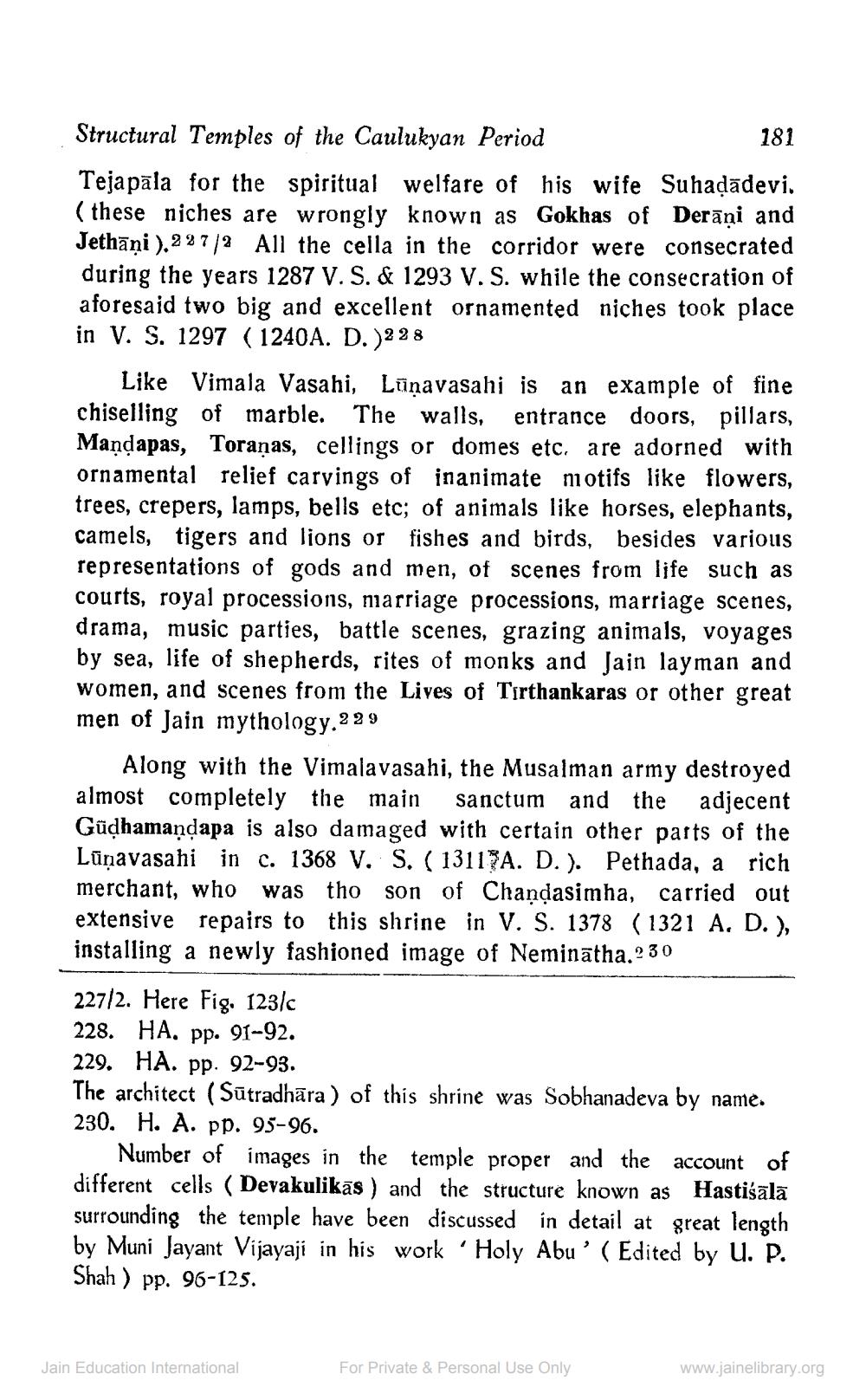________________
Structural Temples of the Caulukyan Period
Tejapala for the spiritual welfare of his wife Suhaḍadevi. (these niches are wrongly known as Gokhas of Derani and Jethani ).227/2 All the cella in the corridor were consecrated during the years 1287 V. S. & 1293 V. S. while the consecration of aforesaid two big and excellent ornamented niches took place in V. S. 1297 (1240A. D.)228
Like Vimala Vasahi, Lunavasahi is an example of fine chiselling of marble. The walls, entrance doors, pillars, Mandapas, Toranas, cellings or domes etc. are adorned with ornamental relief carvings of inanimate motifs like flowers, trees, crepers, lamps, bells etc; of animals like horses, elephants, camels, tigers and lions or fishes and birds, besides various representations of gods and men, of scenes from life such as courts, royal processions, marriage processions, marriage scenes, drama, music parties, battle scenes, grazing animals, voyages by sea, life of shepherds, rites of monks and Jain layman and women, and scenes from the Lives of Tirthankaras or other great men of Jain mythology.229
Along with the Vimalavasahi, the Musalman army destroyed almost completely the main sanctum and the adjecent Güdhamaṇḍapa is also damaged with certain other parts of the Lūnavasahi in c. 1368 V. S. (13117A. D. ). Pethada, a rich merchant, who was tho son of Chandasimha, carried out extensive repairs to this shrine in V. S. 1378 (1321 A. D.), installing a newly fashioned image of Neminatha.230
227/2. Here Fig. 123/c
228. HA. pp. 91-92.
181
229. HA. pp. 92-93.
The architect (Sutradhara) of this shrine was Sobhanadeva by name. 230. H. A. pp. 95-96.
Number of images in the temple proper and the account of different cells (Devakulikās) and the structure known as Hastiśālā surrounding the temple have been discussed in detail at great length by Muni Jayant Vijayaji in his workHoly Abu' (Edited by U. P. Shah) pp. 96-125.
Jain Education International
For Private & Personal Use Only
www.jainelibrary.org




